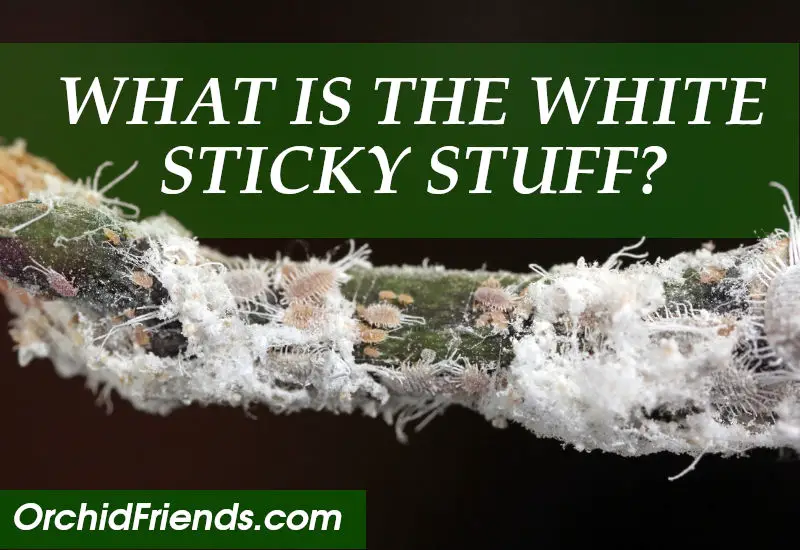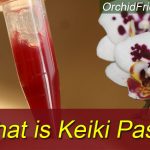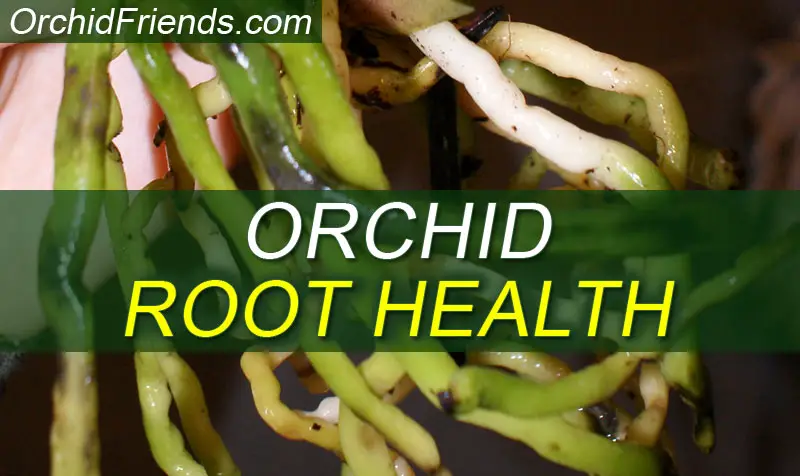
** This post is written and edited by a human being **
The white sticky substance you notice on your Phalaenopsis orchids could be caused by a few different things. Here are the most common reasons:
- Honeydew from Pests: A sticky, sugary substance could be honeydew, which is produced by certain pests like mealybugs, aphids, or scale insects. These pests feed on the sap of your orchid and excrete honeydew as a byproduct. If you notice the sticky substance, look for tiny pests on the leaves or stems. You can treat this by gently wiping the affected areas with a soft cloth and applying an insecticidal soap or neem oil.
- Mold or Fungal Growth: Sometimes, the honeydew attracts mold or fungus, which can appear as white or fuzzy spots. If left untreated, mold can harm your orchid, so it’s important to address it quickly. Make sure your orchid is in a well-ventilated area to help prevent mold growth.
- Natural Orchid Secretions: In rare cases, the orchid itself may secrete a sticky substance, especially if it’s under stress. This could happen if the plant is not receiving the proper care, such as inconsistent watering or environmental conditions.
How to Get Rid of White Sticky on Orchids
If your Phalaenopsis orchid has developed a white sticky substance, it’s important to act quickly to resolve the issue. Here’s a step-by-step guide on how to get rid of the sticky residue:
1. Identify the Cause
First, determine if the sticky substance is honeydew produced by pests like mealybugs, aphids, or scale insects. Check the orchid closely for any small, soft-bodied pests on the leaves, stems, or flower spikes. If pests are present, this is the most likely cause of the sticky residue.
2. Remove Visible Pests
If you spot pests, you can remove them manually:
- Use a soft cloth or cotton swab dipped in rubbing alcohol (70%) to gently wipe off the pests.
- For larger infestations, you may want to spray the affected areas with insecticidal soap or neem oil to kill the pests and prevent further damage.
3. Clean the Orchid
Once you’ve removed the pests, it’s important to clean the sticky residue from the orchid:
- Gently wipe the leaves, stems, and flower spikes with a damp cloth to remove any remaining honeydew.
- If necessary, wash the leaves with lukewarm water and a small amount of mild dish soap. Make sure to dry them thoroughly afterward.
4. Treat the Plant with Insecticidal Soap or Neem Oil
To eliminate any remaining pests and prevent future infestations:
- Spray the entire plant with insecticidal soap or neem oil. Follow the instructions on the label, as these products are safe for orchids and will kill pests without harming the plant.
- Make sure to apply the solution to both the upper and lower sides of the leaves, the stems, and the roots (if exposed).
5. Improve Plant Care
After removing the sticky residue and treating for pests, make sure your orchid is in optimal conditions:
- Ensure it is getting the right amount of light, temperature, and humidity.
- Avoid overwatering, as damp environments can encourage pests and mold.
- Keep an eye on your orchid for any signs of pests or mold in the future.
By following these steps, you should be able to successfully remove the white sticky substance and keep your Phalaenopsis orchid healthy and pest-free. Regular monitoring and proper care will help prevent future issues.
That said, some pest infestations are challenging to eradicate, especially if they’re advanced. So ask yourself if you’re up for the challenge. If you do decide to take on the challenge, then make sure to isolate the plant from your other plants to prevent the pests from spreading – if they haven’t already!
TIP: Find out exactly what you need for keeping orchids at home.
You can read here How to get rid of Fruit flies.



